Chevrolet Colorado 2023 Review
Despite becoming bigger and better, the 2023 Chevrolet Colorado has fewer choices.
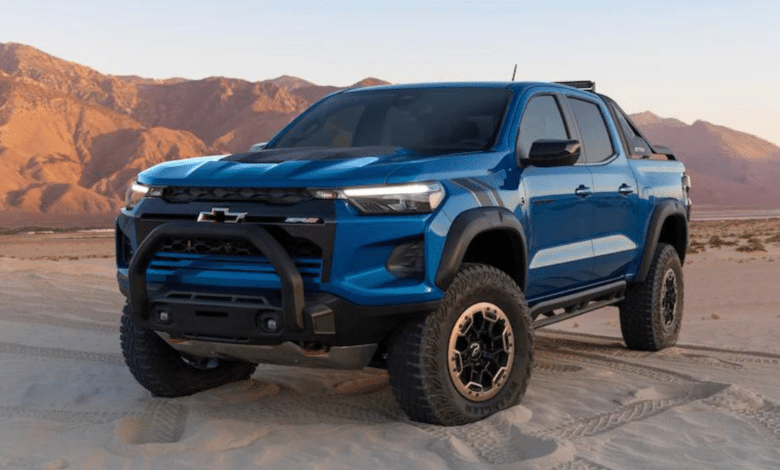
The all-new third Generation of the Chevrolet Colorado was launched in 2023., over ten years after the second generation model helped revitalize the market for midsize pickup trucks. The radical rethink brings an all-new powertrain into a wider body, a more angular appearance, and a more contemporary, clean, and uncomplicated interior. The Colorado portfolio has been significantly simplified, but many trims—starting with the $30,695 Work Truck and ending with the off-road-focused, $48,295 ZR2—aim to satisfy most truck customers in this class.
Customers who often tow and off-road enthusiasts will undoubtedly mourn the loss of the optional turbodiesel engine, which was already in jeopardy in midsize trucks and is now only available in Jeep’s Gladiator. The extended cab with its optional 6-foot bed and the ZR2 Bison are no longer available. Nevertheless, the crew cab was more popular with consumers, and sales of the diesel and Bison were weak. The new truck also boasts a new Desert Boss package on the ZR2 and a new Trail Boss trim that offers a more economical off-roading experience. It is also significantly upgraded in most other ways.
Toyota’s Tacoma, upon which Chevy unmistakably benchmarked the Colorado, dominates the competition in the midsize truck sector. The Ford Ranger and the Nissan Frontier provide a significant selection of trims, pricing ranges, and two- and four-door variations. The Honda Ridgeline and Jeep Gladiator are only available as crew cabs, targeting less conventional truck consumers. Ford and Toyota will release updated models of their trucks in 2024, but in the meantime, Colorado is revolutionizing the industry regarding appearance, performance, and cost.
Chevrolet has carefully adapted the new 2.7-litre turbocharged four for Colorado, even though its basic layout debuted in the Silverado in 2019. The powerful engine has a top “Turbo High Output” ECU tune that can generate up to 310 horsepower and 430 pound-feet of torque. The Work Truck has a lower-spec version with 237 horsepower and 259 pound-feet of torque that employs fewer sound-deadening components and no oil squirters. For just $395, a dealer-offered ECU calibration for the specified power output is available with the purchase of every other vehicle.
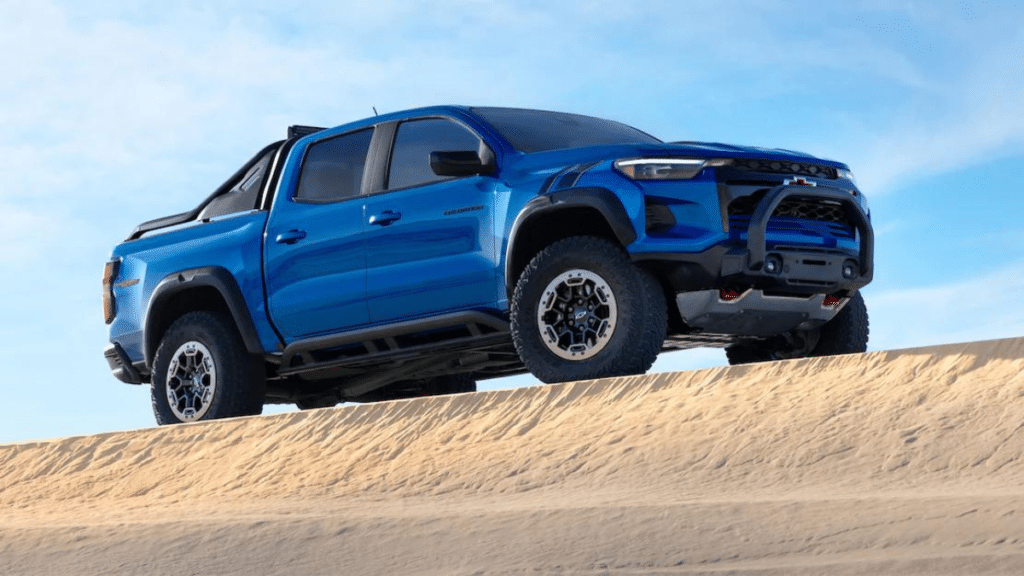
Colorado still employs a solid rear axle with leaf springs rather than coil springs despite the new powerplant, although by truck standards, it rides well. Although larger back passengers undoubtedly need to ask those in front to go forward to create more legroom, the cab seems roomy from the front seats. There is less space for the legs than previously. Each trim level has its grille on the exterior, and the clever tailgate has a measuring ruler, a hinge that can prop up halfway for carrying timber, and an optional watertight storage nook.
With an 11.3-inch touchscreen equipped with Google Built-In, wireless Apple CarPlay, and Android Auto, the Colorado has also made significant advancements in technology and safety features. Unlike the Silverado, Colorado lacks GM’s Super Cruise automated driving technology. Still, it comes standard on base Work Trucks with the basic Chevy Safety Assist suite, up to 10 camera views, a smartphone trailering app, and off-road options. That represents how much better this new Colorado is than the old Colorado and is a significant improvement over earlier versions.
What’s New?
- The Chevrolet Colorado for 2023 has been completely redesigned both inside and out.
- Two available powertrains are a brand-new 2.7-litre turbocharged four-cylinder engine and an eight-speed automatic gearbox. The previous generation’s three engines, including the diesel and V6, have been discontinued.
- The previous extended cab and 6-foot bed options are no longer available, and the new Colorado only comes with a crew cab and a 5-foot (really 62-inch) bed.
- A redesigned off-roading ZR2 model now has a Desert Boss trim with Multimatic DSSV dampers for severe desert running.
- The Trail Boss, a new intermediate off-roading grade, provides significant off-road performance at a lesser cost than rival vehicles.
Performance: Chevrolet Colorado
All three primary Colorado engines from the previous generation model have been replaced with only one. The Cadillac CT4 and the Silverado 1500 employ the “L3B” 2.7-litre turbocharged four-cylinder engine as their power source. Reliability shouldn’t be an issue given that over 300,000 Silverado engines are currently in use, but there are certain Colorado-specific design peculiarities. The performance level of each trim also changes depending on the engine calibration used.
The standard 2.7-liter ECU tune in the Work Truck produces 237 horsepower and 259 pound-feet of torque and feels enough in most situations owing to an eight-speed automatic gearbox with faster shifts and less weight (internal code 8L45). 310 horsepower and 430 lb-ft of torque are available on higher-output ECU flashing, which is a lot of power in this class. This necessitates the more powerful 8L90 eight-speed automatic, which shifts slowly but can handle more power.
Nevertheless, accelerating to highway speeds and passing are easily accomplished, even up steep inclines, thanks to optimum gear ratios and a ton of turbocharged torque.
The Colorado experiences some jounce and vibrations while driving on rougher roads and through curves, but tight sway bars and shocks almost eliminate body roll. Strong brake bite and precise, though not communicative, steering enable aggressive driving over extended road sections without sacrificing everyday comfort.
The Trail Boss version (equipped with standard all-terrain tires) excels even in contrast to the more expensive Z71, which concentrates more on luxury cues for the casual off-roader. This is true on fire roads and through dirt portions. While the ZR2 comes standard with fully locking front and rear differentials, the Trail Boss and Z71 have a rear limited-slip differential. We’ve already seen the future Desert Boss version do quite sizable, high-speed leaps on a desert road, so it should be a fitting successor for the retired Bison.
Additionally, even without the old diesel, the new engine and robust components enable a maximum towing capability of 7,700 pounds, surpassing the Gladiator and V6-powered Tacoma at 6,800 and 6,720 pounds, respectively. The Colorado will probably be a more enjoyable everyday driver when you aren’t towing because of the Gladiator’s maximum tow package constraints and axle ratio.
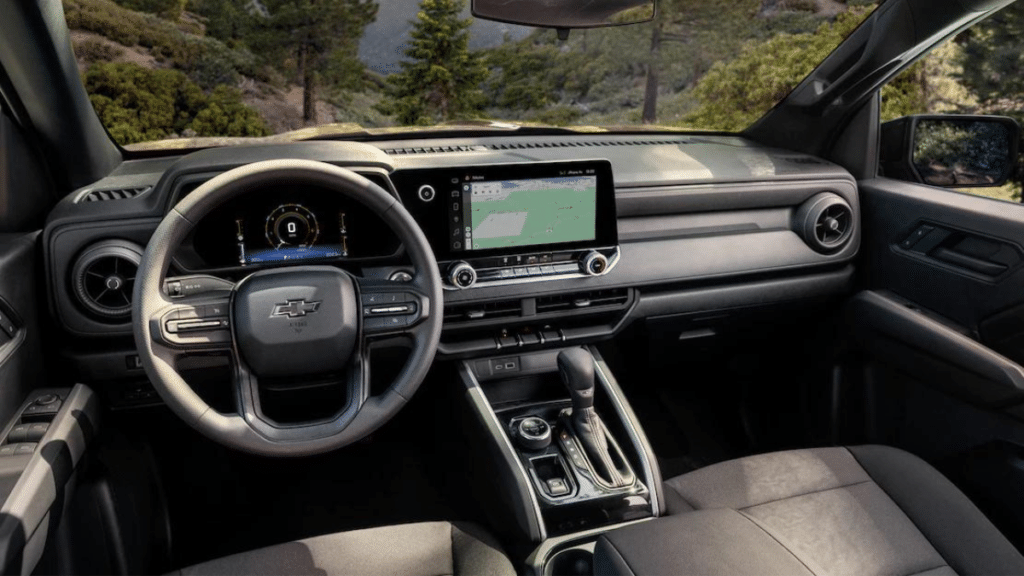
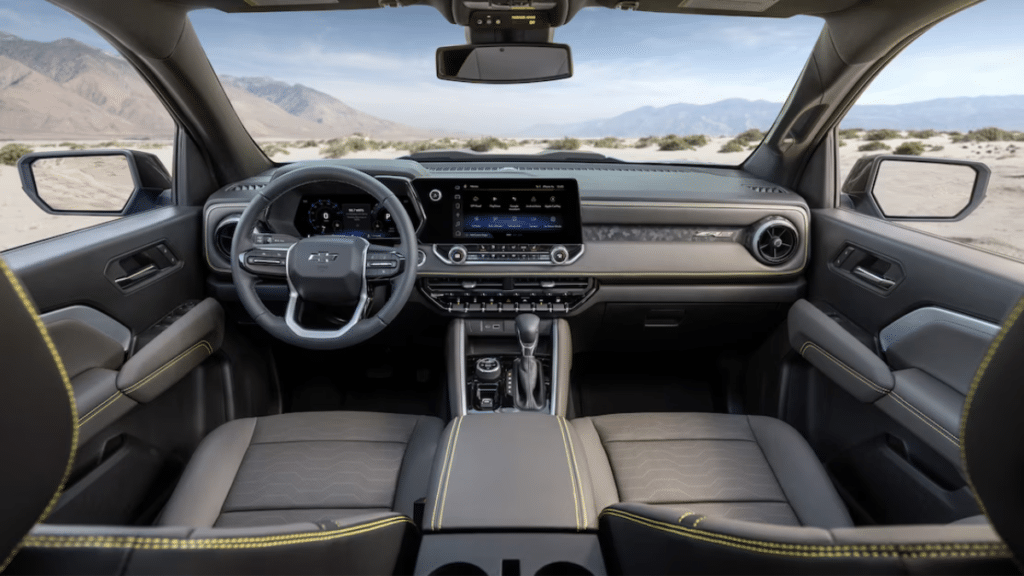
Fuel efficiency: Chevrolet Colorado
For 2023, there are fewer Colorados with rear-wheel drive and fewer engines. The rear-wheel purpose is standard on the Work Truck and LT models, while four-wheel drive (4WD) is an option. These are the most economical models since they all have the same engine. According to the EPA, the rear-drive WT gets 22 mpg combined (20 city, 25 highway), while the rear-drive LT gets 20 mpg combined (18 city, 23 motorway). Models with 4WD WT and LT lose one mpg in each test.
The Trail Boss and ZR2 perform worse even though the latter has not yet received an EPA rating. The Trail Boss can only get a maximum of 18 mpg due to its all-terrain tires and heavier equipment (17 city, 19 highway). This puts it below the Ranger Tremor but about on par with the Toyota Tacoma TRD Pro and Nissan Frontier PRO-4X.
Despite Colorado’s reasonable comparisons to the Tacoma and Frontier and its proximity to the Ridgeline, these are just average results. Critically, Chevrolet does not anticipate owners will need to utilize high-test 91 octane; even the maximum spec figures of 310 horsepower and 430 pound-feet are computed using 87 octane pump petrol. The Jeep Gladiator diesel is now the class leader in fuel economy, achieving up to 24 mpg combined, while the Ford Ranger can get up to 22 mpg but gets better mileage overall. However, it does cost a lot more than the Colorado.
Safety & Driver Support
The 2023 Chevrolet Colorado receives fewer points in our ratings since neither the Insurance Institute for Highway Safety (IIHS) nor the National Highway Traffic Safety Administration (NHTSA) have evaluated it. However, the new Colorado has significantly enhanced its driver-assist equipment and achieved significant safety advancements.
Super Cruise (offered on the Silverado) isn’t an option, but for the first time, the Colorado has a competitive list of standard amenities. Standard features include automated high beams, lane keep assist with lane departure warning, forward automatic emergency braking with pedestrian recognition, forward collision alarms, and a following distance indicator.
Every Colorado can also be customized with more sophisticated features, such as adaptive cruise control, surround-view monitoring, and rear pedestrian detection, as part of a $950 Technology Package. Blind zone alerts, parking assistance, and rear cross-traffic alerts with emergency braking are also available for a $505 Safety Package. Almost none of this equipment was readily accessible in earlier years, and what was was not up to par.
Up to 10 distinct camera angles can be accessed on the 11.3-inch touchscreen of Colorado, along with the trailering software from Chevrolet and an underbody camera available on the Z71 and ZR2 as off-road driving assistance. Chevrolet generally addressed usability with physical switchgear, but turning on the headlights necessitates navigating through two menu panels on the infotainment screen, which is a considerable nit to pick.
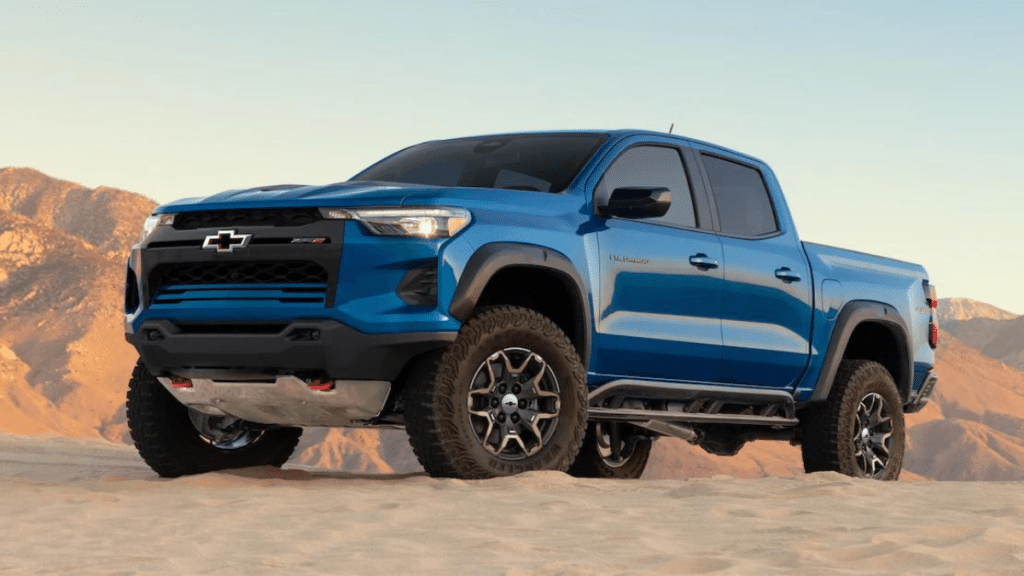
Comfort and Space
The all-new Colorado’s interior emphasizes horizontal lines and open spaces, providing a comfortable environment for those who sit in the driver’s and front passenger’s seats. Both leather and cloth-upholstered chairs have enough leg and headroom and feel relaxed enough for everyday use while being durable enough for extended service life. A driver mode and 4WD selection dial are moved to the centre console, giving the appearance of extra room. The new Generation also moves the gear shifter of the Colorado to the right.
However, the front seats must be moved forward for the back passengers to enjoy even the appearance of legroom. Despite having a 3.1-inch larger wheelbase than previously, the 2023 Colorado’s specs sheet curiously indicates less backseat legroom than the 2022 model (34.7 inches to 35.8). This puts it on par with the Ranger and Frontier, which is still much roomier than the Tacoma. The spacious interior of the Cabin defies its apparent size.
If you often transport tall individuals, the Gladiator and Ridgeline are also worth considering since they provide much more space in the rear.
Infotainment: Chevrolet Colorado
Colorado is the category leader because of a mix of Google Built-In, wireless Apple CarPlay, and Android Auto. The 11.3-inch touchscreen’s user interface is simple, straightforward, and easy to use, even without a smartphone attached. At the same time, higher-end vehicles may add a Bose sound system as an option to offer superior music.
Along with a good selection of gauges and readouts in the digital instrument cluster located behind the driver’s seat, Chevy also offers off-road-specific meters for pitch and roll, transfer case gear selection, and steering angle on better-equipped trucks, as well as gauges for oil temperature and pressure, coolant temperature, a digital speedometer, and a tachometer. Toyota, Ford, and Nissan must significantly advance their following trucks to compete with the new Colorado.
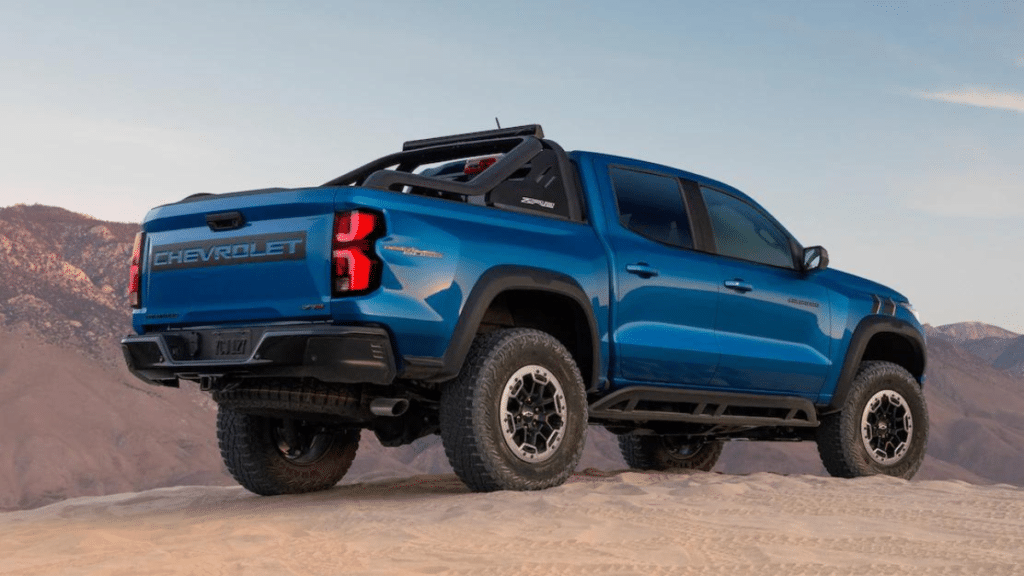
Storage & Cargo Space:
On the second-generation Colorado, the most popular option was crew cabs with short beds. Therefore, Chevrolet only offered that setup on the third-generation vehicle. The bed’s size is comparable to that of the Frontier and Ranger at 61.2 inches long. By aligning the load level with the in-bed wheel arches, a clever tailgate that may open halfway makes storing timber more easily accessible.
Although the glovebox is minor, many cupholders and a large centre console compartment are inside to enhance storage choices. The Colorado has more space when the rear seats are folded for storage. However, pickup owners looking to haul heavier goods may want to consider the 6-foot bed in the Tacoma or the 73.3-inch bed offered as an option on Frontier King and Crew Cab models.
Design: Chevrolet Colorado
Colorado has risen beyond its rivals by comparing itself to Tacoma and adopting stylistic elements from Silverado. Due to a sloped hood and high midline, the Ranger’s relatively nondescript appearance may often seem nose-heavy. In contrast, Toyota continues to style the Tacoma with lines from the 2009 4Runner and even previous Tacomas. Although it would be hard to match the Gladiator’s butch aesthetic, the Chevy now seems more at ease.
Even yet, Colorado’s broad hood and several grille designs might seem overdone, particularly on the ZR2, which adds cladding and bull bars that seem made of plastic but are metal (the antithesis of what is ideal). Trail Boss falls towards the middle of the spectrum with a track that is 3.4 inches wider and a 2-inch lift over essential trucks. Despite longitudinal humps, trail vision over the large hood sometimes necessitates shifting the driver’s seat forward and up.
The Colorado Cabin has enhanced interior design and is undoubtedly the segment’s most cutting-edge. In contrast, most other books—including the new Frontiers from 2022—appear decades old.
The Chevrolet Colorado 2023: Is It Worth It?
Finding a happy medium takes a lot of effort, spec’ing different combinations within Colorado’s five trim levels. The WT ($30,695 including a $1,495 destination charge) is the lowest-priced of the five basic trims, followed by the LT ($33,095), Trail Boss ($38,495), Z71 ($41,395), and ZR2 ($48,295).
Most buyers will likely be satisfied by adding a variety of option packages to the LT (especially the Technology and Safety packages). In contrast, an entry-level Trail Boss with only one or two packages—to add ventilated leather seats, for example—is likely to satisfy both budgetary concerns and a potent combination of looks and capabilities. Even though it isn’t as extreme as the ZR2, the Trail Boss offers highly favourable pricing comparisons to the Ranger Tremor and Toyota Tacoma TRD Off-Road because of its more wheel travel, 2-inch lift, better power output, and all-terrain tires.
Spending the difference on a well-equipped Trail Boss is preferable to the Z71 since it adds finer graphics, keyless entry and start, standard cruise control, and in-bed power, but not much more than the Trail Boss.
The ZR2 Desert Boss package is top-of-the-line, with a 3-inch raise, multimedia DSSV dampers, beadlock wheels, and a lightbar for maximum four-wheeling enjoyment. Although the ZR2 hasn’t been thoroughly tested, it is priced less than the Mojave and Gladiator Rubicon until the Desert Boss package is included and slightly more than the outgoing 2023 Ranger Tremor. It is also about on par with the Tacoma TRD Pro.
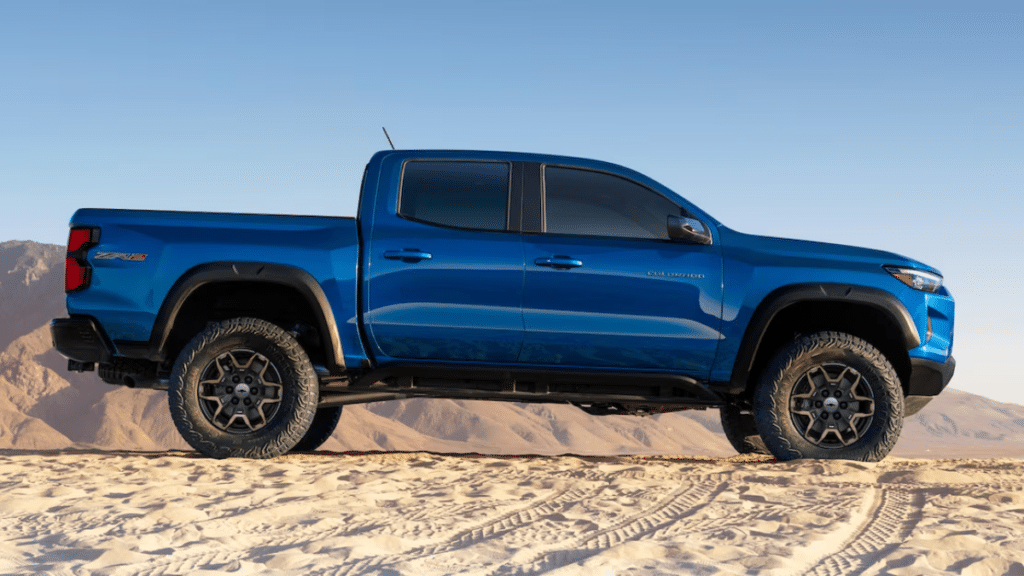
How Much Does the 2023 Chevrolet Colorado Cost to Insure?
Compared to its rivals, Colorado’s insurance prices are approximately average. The national average for a Colorado Z71 for a typical 30-year-old female driver with a clean driving record is $2,100 annually. Comparatively, the Jeep Gladiator costs $2,050, the Honda Ridgeline Sport $1,950, the Toyota Tacoma TRD Off-Road $2,043, and the Ford Ranger Lariat $1,947.
Chevrolet Colorado Generations
Third Generation
2023 to Present
Although trucks didn’t show up at dealerships until 2023, the third-generation Chevrolet Colorado premiered in the summer of 2022 as a 2023 model. A 2.7-liter turbocharged four-cylinder (taken from the Silverado) engine with 237 or 310 horsepower depending on tune and trim has replaced the previous Generation’s basic four-cylinder, turbodiesel, and V6 engines. Was it also deleted? The old 6-foot bed option and extended cab layout, but few buyers were choosing that model.
The third-generation Colorado boasts a totally new and highly modern interior, a Google-native infotainment system, a broad range of active safety systems, a complete styling makeover, and significant technical enhancements. Another new grade is the affordable off-road Trail Boss.
Second Generation
2015 to Present
The current second-gen Colorado offered in the United States wouldn’t come until the 2015 model year, despite a comparable Colorado emerging in other countries as early as 2013. It kept using GMC Canyon mechanical components. In 2016, Chevrolet introduced a mighty 2.8-litre diesel engine to Colorado’s list of optional features. In decades, this was the first diesel offered in a tiny or midsize truck on the American market. The off-road-focused ZR2 debuted in 2017, and a year later, the even wilder ZR2 Bison option. The Colorado’s front end and tailgate design were modified for 2021.
First Generation
2004 to 2012
The 2004 model year saw the introduction of the Chevrolet Colorado, which GM of Brazil and Isuzu jointly developed. Although durable, it had weak powertrains and uninspiring aesthetics in the beginning. While the four-cylinder and five-cylinder engines would improve throughout the years, the 2009 arrival of a 5.3-litre V8 gave Colorado some much-needed oomph. In addition to sharing components with its identical twin, the GMC Canyon, Isuzu also offered the rebadged i-series in the United States. The Hummer H3 would be built on the Colorado’s chassis as well.
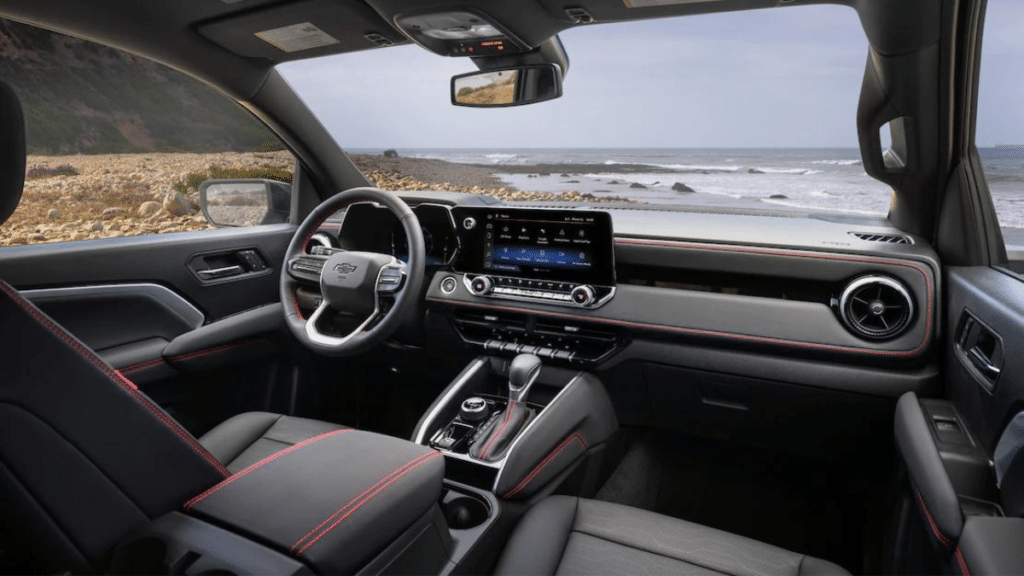
verdict
To stay ahead of the competition in the midsize truck market, the third generation of Chevrolet’s Colorado midsize sedan debuts 2023 with a more assertive appearance, upscale interiors, and technological advancements. The 2.7-litre four-cylinder used in the New Colorado and the large Silverado has three distinct output trim levels depending on the calibration of WT, LT, Trail Boss, Z71, and ZR2 models, four of which start at around $40,000. However, several features were removed, most notably the ageing turbodiesel engine, the extended cab with its optional long bed, and the off-road ZR2 Bison model. Overall, it’s a much-improved truck near the top of its class.




